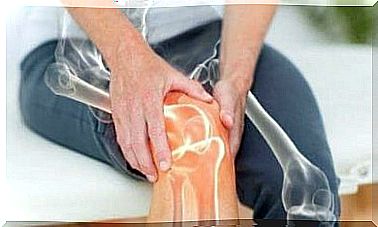The Use Of Arnica: Benefits And Contraindications

In this article we are going to talk about the use of arnica. According to popular literature, the benefits of arnica vary greatly. This is a plant of the Asteraceae family that is native to Central and Southern Europe, but also occurs in Asia and North America.
You’ve probably heard of arnica because it’s a common ingredient in creams or ointments to relieve bruising and muscle pain.
Although arnica is most commonly used to treat certain inflammatory conditions, there are a number of people who say it may also be beneficial for hair growth. Do you want to know more about the benefits and contraindications of this plant? In this article we tell you all about it.
The use of arnica and its benefits

As we mentioned, the use of arnica, which resembles a daisy in appearance, dates back to ancient times. Generation after generation has used it to treat bruises and muscle aches. Below we give you details about the properties and health benefits of arnica.
1. It helps to relieve pain
Arnica is popular for its anti-inflammatory properties. This is because, according to a review published in The Journal of Pharmacy and Pharmacology, it contains several chemical compounds, including flavonoids and phenolic acids. This would reduce inflammation and relieve pain.
Research published in The Cochrane Library has also shown on the topical use of herbs to treat osteoarthritis that arnica extract gel can have effects similar to those of ibuprofen. Ibuprofen is a non-steroidal anti-inflammatory drug that works well for the pain of people with osteoarthritis.
However, it is worth noting that studies are inconclusive about the effectiveness of the plant’s analgesic properties. There is also no detailed and accurate information about the current dose.
2. It helps to reduce bruising
Bruises appear as a result of a blow or trauma to any part of the body. They occur when blood vessels on the surface closest to the skin break as a result of the impact. Arnica can help reduce these spots thanks to its anti-inflammatory effects.
In this regard, a review published in the American Journal of Therapeutics indicates that this plant would be more effective than a placebo for the treatment of various conditions. For example in post-traumatic and postoperative pain, edema and bruising.
On the other hand, a study published in The British Journal of Dermatology showed that 20% arnica gel was more effective than 5% vitamin K and a placebo given to people with small hematomas who had been treated with lasers. originate.
3. It Helps Prevent Hair Loss
In addition to the benefits mentioned above, arnica may have properties to promote hair growth and prevent hair loss. It seems that using the oil of this plant helps reduce irritation and inflammation of the scalp.
In this case, several anecdotal sources confirm the effectiveness of using arnica for this purpose and it is popular in hair care routines. However, there is very little scientific documentation about it.
The main uses of arnica and the method of preparation
One of the most popular uses of arnica for its benefits is local. However, you can also use it to prepare infusions. We will tell you how to prepare both of these two options.
Gel
Topical use is best suited to treat inflammation and bruises. For this reason and because of its absorbency, the gel form is a good idea in these cases. Follow the steps below to make your own ointment.
Ingredients:
- 400 ml coconut oil (2 cups)
- 50 grams dry arnica (1/2 cup)
- 62 grams grated beeswax (1/2 cup)
Preparation:
- First, pour the coconut oil and the dried arnica into a pan and simmer for about 1 hour.
- Then sieve the remains of the preparation and put the pan back on the fire. Then add the beeswax and let it simmer until it melts.
- Then take it off the heat and wait a few minutes.
- Now pour all ingredients into the blender and blend until smooth.
- Finally, store the ointment in a glass jar with a lid in a cool, dry place.
Infusion
This way of consuming arnica is very easy to prepare. You only need a few ingredients and the effect takes a few minutes. In addition to drinking an infusion, you can also apply it directly to the skin if you have a bruise or muscle pain.
Ingredients:
- 250 ml water (1 cup)
- 1 handful of arnica leaves
- Honey (optional)
Preparation:
- First, pour the water into a pan and heat to medium temperature.
- Before it boils, add the handful of arnica leaves and let it steep for 10 minutes.
- If you want, you can sweeten it with honey.
Possible side effects of taking arnica

While this is an herb that serves as a natural alternative to treat the conditions already mentioned, it is important to consider the potential side effects of taking arnica. In high doses, arnica leads to nausea, vomiting and digestive problems.
At the same time, a number of people are allergic to the components of this plant. Pregnant or breastfeeding women should also avoid it (Spanish link), as it could have negative effects on the baby’s health. It is therefore necessary to consult a doctor if you have any questions or before using it.









